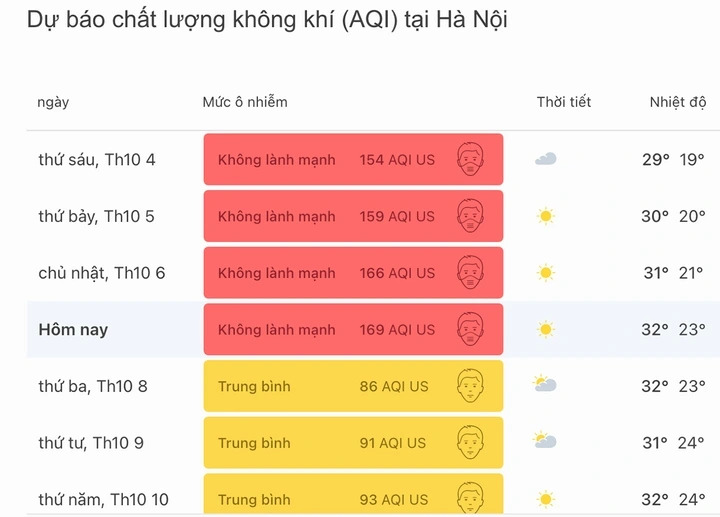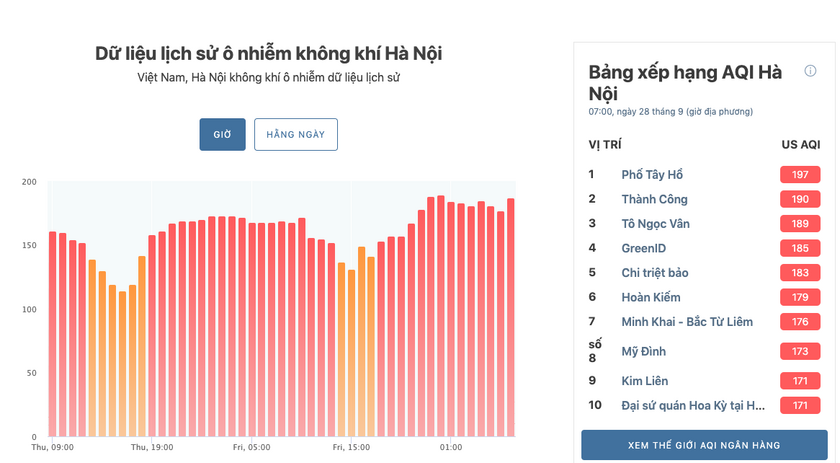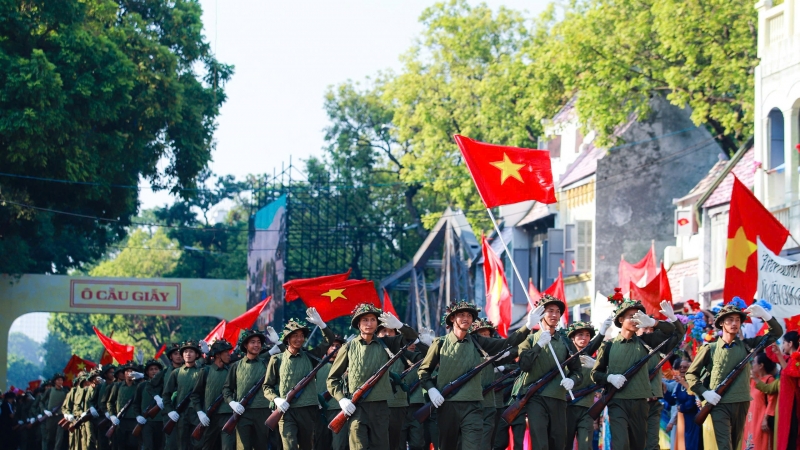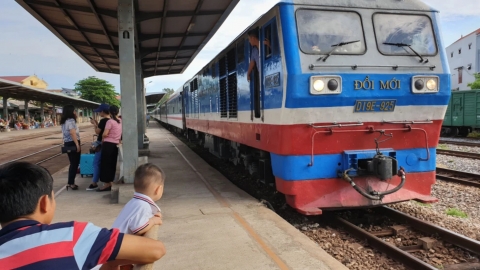According to the latest air quality chart in Hanoi, our capital city's air pollution has been at the "Unhealthy" level continuously for the first 4 days of October, specifically from October 4 to October 7. According to AQI, it is forecasted that from 12 noon to 1 pm on October 7, the concentration of PM2.5 fine dust will reach its highest level, about 130.3 µg/m3 (micrograms/cubic meter). On the same day, from about 1 pm to 2 pm on October 7, the concentration of PM10 fine dust will also reach its highest level, at 119.5 µg/m3.
In real time, the air quality index (AQI) in Hanoi is currently 168. According to the AQI index value for ozone and fine dust pollution of the US Environmental Protection Agency (EPA), the index of 168 is at the Red - Unhealthy level; ranked 4th on the 6-level air pollution scale.

Hanoi is among the top big cities with the most air pollution in the world.
Air pollution in Hanoi is so severe that people can feel it with the naked eye. According to the EPA, with this level of Unhealthy air pollution, some people may experience health problems if measures are not taken to reduce air pollution.
In fact, the situation of smog covering the city, especially in the early morning, is no longer strange to the people. From afar, one can see a thick layer of fog covering many high-rise buildings and streets. This increasingly serious pollution situation makes many people living and working in the capital feel concerned about their health, and feel afraid and hesitant when participating in traffic due to the negative effects of air pollution.

At 8:50, the air pollution index in Hanoi was 174, the most polluted in the world, unhealthy air quality.
Air pollution is one of the biggest environmental risks to the health of vulnerable groups, such as children and the elderly, according to WHO. According to WHO, outdoor air pollution caused 4.2 million premature deaths worldwide in 2019; most of these deaths were due to exposure to fine particulate matter, which causes cardiovascular and respiratory diseases and cancer.
About 89% of these premature deaths occur in low- and middle-income countries, with the greatest number occurring in the WHO South-East Asia and Western Pacific regions. Air pollutants include: Particulate matter (PM), Carbon monoxide (CO), Ozone (O3), Nitrogen dioxide (NO2), Sulphur dioxide (SO2).

According to IQAir's recommendations, people should avoid gathering outdoors, close windows to avoid dirty air outside, and wear masks when going out.
Among them, PM2.5 fine dust (dust particles with a diameter of 2.5 microns or less) has an extremely dangerous impact on human health. This type of fine dust is emitted from the burning of gasoline, oil, diesel fuel or wood. Because of its extremely small size, PM2.5 can penetrate into the lungs and blood vessels.
Faced with the current air pollution situation in Hanoi, experts recommend that people regularly monitor air quality to arrange reasonable work and leisure schedules. People should regularly use masks and goggles when traveling or being exposed to smoky and dusty environments; limit travel through areas with a lot of industrial smoke, and pay attention to protecting their health in these special polluted conditions.
Along with that, the Ministry of Health also recommends that people avoid gathering outdoors, close windows to avoid dirty air outside, wear masks when going out, and run air purifiers.
In case of having to work or do outdoor activities, you should arrange and choose a time of day with less pollution, need to rest more, and perform moderate intensity activities. Avoid activities in areas with high risk of air pollution. In case of having to participate in traffic, you should increase the use of public transport, limit the use of motorbikes and bicycles to reduce exposure to polluted air.



































